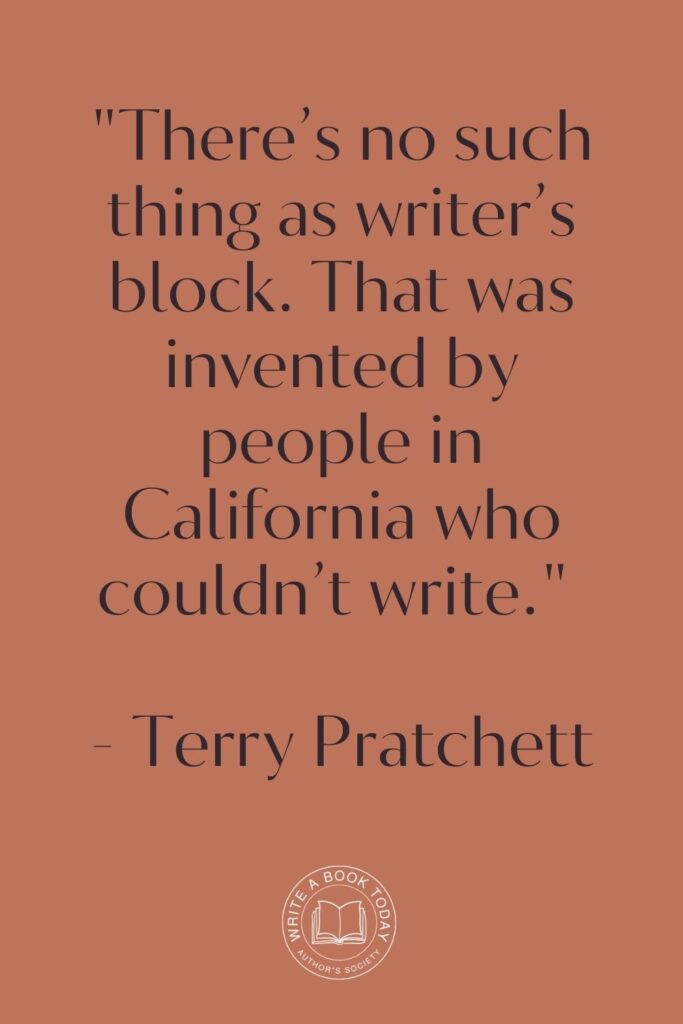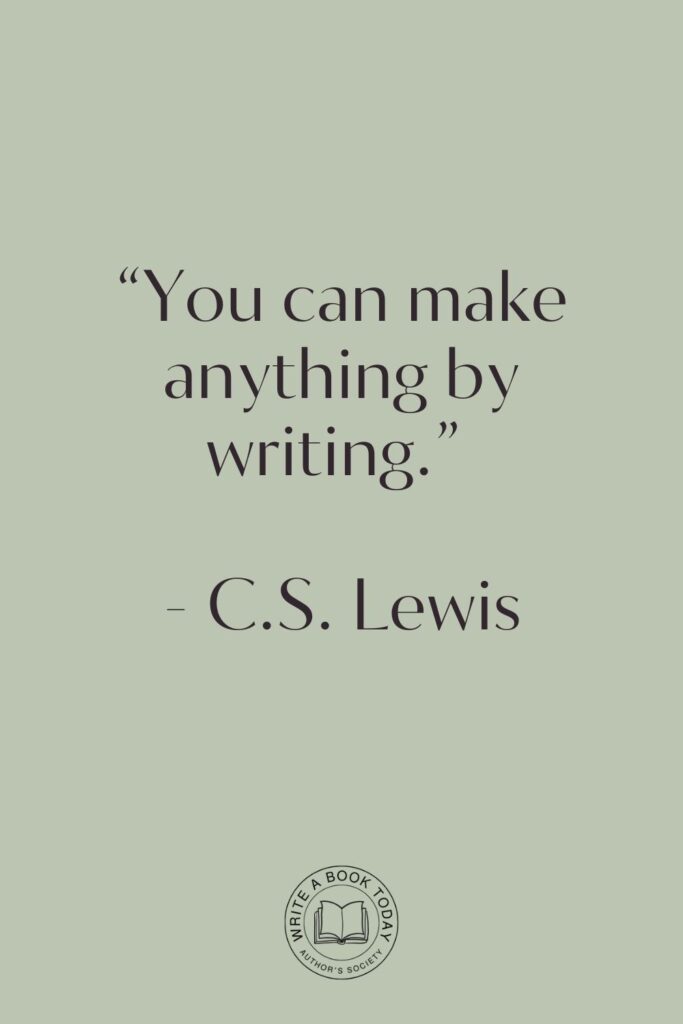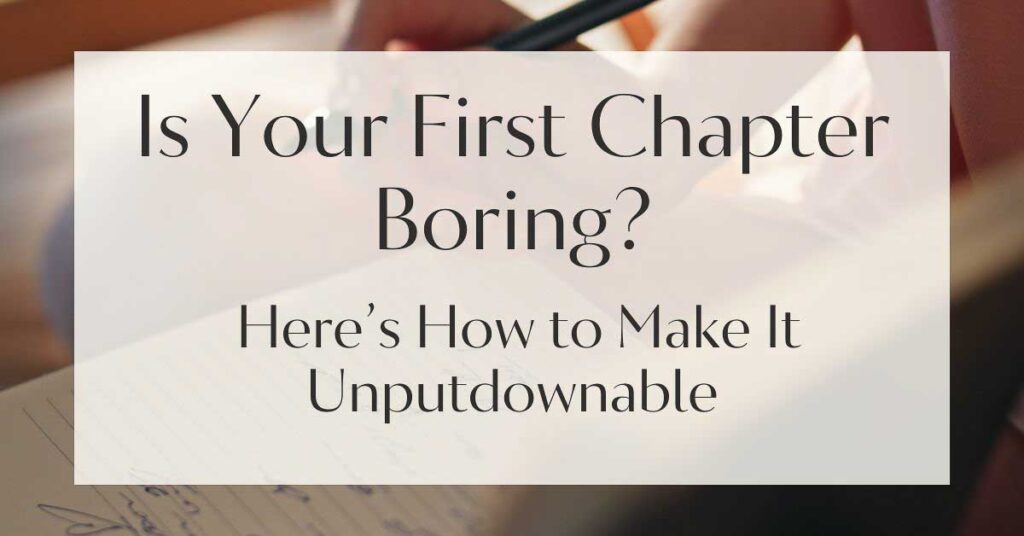Imagine standing at the edge of a vast ocean, each wave representing a new possibility. That’s the allure of a book’s first chapter – a gateway to a world teeming with adventure, mystery, and emotion.
But how do you ensure that your reader dives in headfirst, eager to explore the depths of your narrative? The secret lies in crafting a first chapter that’s as irresistible as the call of the sea.
Understanding the Importance of Your First Chapter
The first chapter is more than just an introduction; it’s the heartbeat of your story. It sets the rhythm, introduces the melody, and invites readers to dance along.
Think of it as a symphony’s opening note, resonating with promise and intrigue. A captivating first chapter can transform a casual browser into a devoted reader, eager to unravel the mysteries within your pages.
In essence, the first chapter acts as a binding contract between you and your reader. It promises them a journey worth embarking on, filled with characters they’ll care about and conflicts that will stir their emotions.
This initial encounter should leave them yearning for more, turning pages with anticipation and excitement.

Key Components of a Captivating First Chapter
Creating an engaging first chapter is akin to weaving a tapestry, each thread contributing to a larger picture.
To master how to write a captivating first chapter, consider these essential components:
- Character Introduction: Introduce your protagonist in a way that highlights their unique traits and struggles. Let readers see them in their element, whether it’s navigating a bustling city or quietly contemplating in solitude.
- Setting the Scene: Paint a vivid picture of the world your characters inhabit. Use sensory details to immerse readers, allowing them to hear the rustle of leaves or feel the warmth of the sun.
- Conflict and Stakes: Present a challenge or dilemma that propels the narrative forward. This conflict should resonate with the protagonist’s desires and fears, creating tension and urgency.
- Voice and Tone: Establish a narrative voice that reflects the story’s mood and theme. Whether it’s whimsical, somber, or suspenseful, the tone should align with the overall journey.
Crafting an Engaging Opening: Strategies and Techniques
Now that we’ve outlined the key components, let’s delve into specific strategies for crafting an opening that hooks readers from the very first sentence.
1. Hooking the Reader from the First Sentence
Your opening line should be a siren’s call, drawing readers into your world with an irresistible pull. Consider starting with a question, a bold statement, or an unexpected event that piques curiosity.
This initial hook should ignite a burning desire to uncover the story’s secrets.
For instance, think of how J.K. Rowling begins “Harry Potter and the Philosopher’s Stone” with a seemingly ordinary day that quickly reveals extraordinary possibilities.
The mundane is transformed into magic, inviting readers to embark on a wondrous adventure.
2. Establishing Setting and Atmosphere
The setting is the stage upon which your characters perform, and its atmosphere can greatly influence the story’s tone.
Use descriptive language to transport readers to your world, whether it’s a bustling metropolis or a serene countryside.
Consider how Charles Dickens paints a vivid picture of Victorian London in “A Tale of Two Cities,” using sensory details to evoke a sense of time and place.
To enhance your setting, incorporate sensory details that engage multiple senses. Describe the scent of rain-soaked earth, the distant hum of city life, or the gentle caress of a breeze.
These elements create a rich tapestry that envelops readers in your story’s world.
Feeling lost with your debut novel?
Fiverr Pro connects you with expert editors, designers, and marketers – everything you need to get your book ready for success!

3. Setting the Tone and Mood
The tone of your first chapter should echo throughout your narrative, setting expectations for what’s to come. Whether it’s light-hearted humor or brooding suspense, the mood should be consistent with the story’s themes.
Consider how Jane Austen establishes a witty and satirical tone in “Pride and Prejudice,” immediately setting the stage for a tale of social commentary and romance.
4. Presenting the Central Conflict
Conflict is the engine that drives your story forward, and introducing it early keeps readers invested. Whether it’s an internal struggle or an external challenge, the conflict should be relatable and compelling.
In “The Hunger Games,” Suzanne Collins wastes no time in presenting Katniss Everdeen’s fight for survival, instantly hooking readers with high stakes and emotional intensity.
When crafting your conflict, consider the protagonist’s desires and fears.
How do these elements clash with the world around them?
This tension creates a dynamic narrative that captivates readers from the start.
5. Creating Immediate Stakes
Establishing stakes early in your story is crucial for maintaining reader engagement. Show what’s at risk for your characters, whether it’s their lives, relationships, or dreams.
In “Gone Girl,” Gillian Flynn introduces a missing person case that immediately raises questions and stakes, urging readers to unravel the mystery.
6. Using Unique Narrative Voice
A distinctive narrative voice adds depth and personality to your story, making it memorable and engaging.
Whether it’s the dry wit of Douglas Adams in “The Hitchhiker’s Guide to the Galaxy” or the lyrical prose of Gabriel Garcia Marquez in “One Hundred Years of Solitude,” a unique voice can captivate readers and draw them into your world.
Experiment with different narrative styles and perspectives to find the one that best suits your story. A strong voice not only enhances the narrative but also creates a connection between the reader and the protagonist.

Leaving Readers Wanting More: The Art of the Cliffhanger
As your first chapter draws to a close, consider leaving readers with a tantalizing cliffhanger. This technique creates suspense and anticipation, compelling them to continue reading.
A well-crafted cliffhanger can be a question, a revelation, or an unexpected twist that leaves readers eager to discover what happens next.
Analyzing Successful First Chapters: Lessons from the Masters
Studying the first chapters of renowned novels can provide valuable insights into effective storytelling techniques.
By examining how successful authors hook their readers, you can gain inspiration and refine your own approach to crafting an unputdownable first chapter.
Famous First Chapters and What Makes Them Work
Consider the opening of “1984” by George Orwell, where the oppressive atmosphere of a dystopian society is established from the first sentence.
The stark imagery and foreboding tone immediately immerse readers in Winston Smith’s world, setting the stage for a gripping narrative.
Similarly, Harper Lee’s “To Kill a Mockingbird” introduces readers to the Finch family and their small-town life, while subtly hinting at the deeper social issues that will unfold.
This masterful blend of character, setting, and conflict draws readers in and keeps them invested in the story’s outcome.
Google Docs is for notes. Scrivener is for novels. Upgrade your writing game and try it for free today!

Common Mistakes to Avoid When Writing Your First Chapter
While crafting your first chapter, it’s essential to steer clear of common pitfalls that can detract from its impact.
Avoid overwhelming readers with excessive backstory or exposition, as this can slow down the narrative and diminish engagement.
Instead, focus on weaving essential details seamlessly into the action and dialogue.
Additionally, ensure that your opening aligns with the story’s genre and tone. A mismatch can create confusion and disconnect, leading readers to lose interest.
Consistency in style and voice is key to maintaining a cohesive and engaging narrative.

Tips for Revising Your Opening Chapter
Once you’ve drafted your first chapter, take the time to revise and refine it. Pay attention to pacing, ensuring that the narrative flows smoothly and maintains momentum.
Consider seeking feedback from beta readers or writing groups to gain fresh perspectives and identify areas for improvement.
During revisions, focus on tightening your prose and eliminating unnecessary words. Each sentence should contribute to the story’s development and enhance reader engagement.
Remember, less is often more when it comes to creating a powerful opening.
The Psychological Aspects of Writing an Engaging First Chapter
Understanding the psychological aspects of storytelling can enhance your ability to connect with readers on a deeper level.
Consider how your characters’ motivations and emotions drive the narrative, and use these elements to create relatable and compelling arcs.
By tapping into universal human experiences, you can evoke empathy and investment in your story.

Exploring Reader Expectations and Genre Conventions
Each genre comes with its own set of conventions and reader expectations. Familiarize yourself with these norms to ensure your first chapter aligns with the genre’s standards while offering a fresh perspective.
Whether you’re writing a mystery, romance, or fantasy, understanding what readers anticipate can help you craft a satisfying and engaging opening.
No marketing platform? No social following? No problem!
Publisher Rocket helps you market your debut novel like a pro.
It’s a gamechanger for debut authors – try it today!


Embracing Your Unique Writing Style
Finally, embrace your unique writing style and let it shine through in your first chapter. Authenticity and originality are key to creating a memorable narrative that resonates with readers.
Don’t be afraid to experiment with different techniques and approaches until you find the one that feels true to your voice and vision.
By mastering the art of crafting an unputdownable first chapter, you can captivate readers from the very first page and lead them on a journey they’ll never forget.
So dive into the creative process with enthusiasm and confidence, and watch as your story unfolds in the most enchanting way possible.








